Every game has untapped revenue potential hiding in its player base. Understanding how much of that potential can be unlocked through direct-to-consumer (D2C) channels is one of the most important strategic steps a studio can take.
It’s tempting to think of D2C as an open-ended revenue stream, that once you stand up a web shop or integrate an in-game checkout, the gains will compound indefinitely. But in practice, D2C performance is governed by three variables: your delivery method, your game’s genre, and your geographic mix.
The right combination of these factors can turn D2C into a high-margin growth engine. The wrong one can make it a distraction. Here’s how to evaluate your opportunity with clear, data-backed reasoning.
Your D2C Method Defines the Ceiling
There are two primary D2C delivery methods available to mobile studios today: in-game checkout and web shops.
Each plays a distinct role in a studio’s D2C roadmap, and the tradeoffs between them determine how quickly and how deeply you can scale.
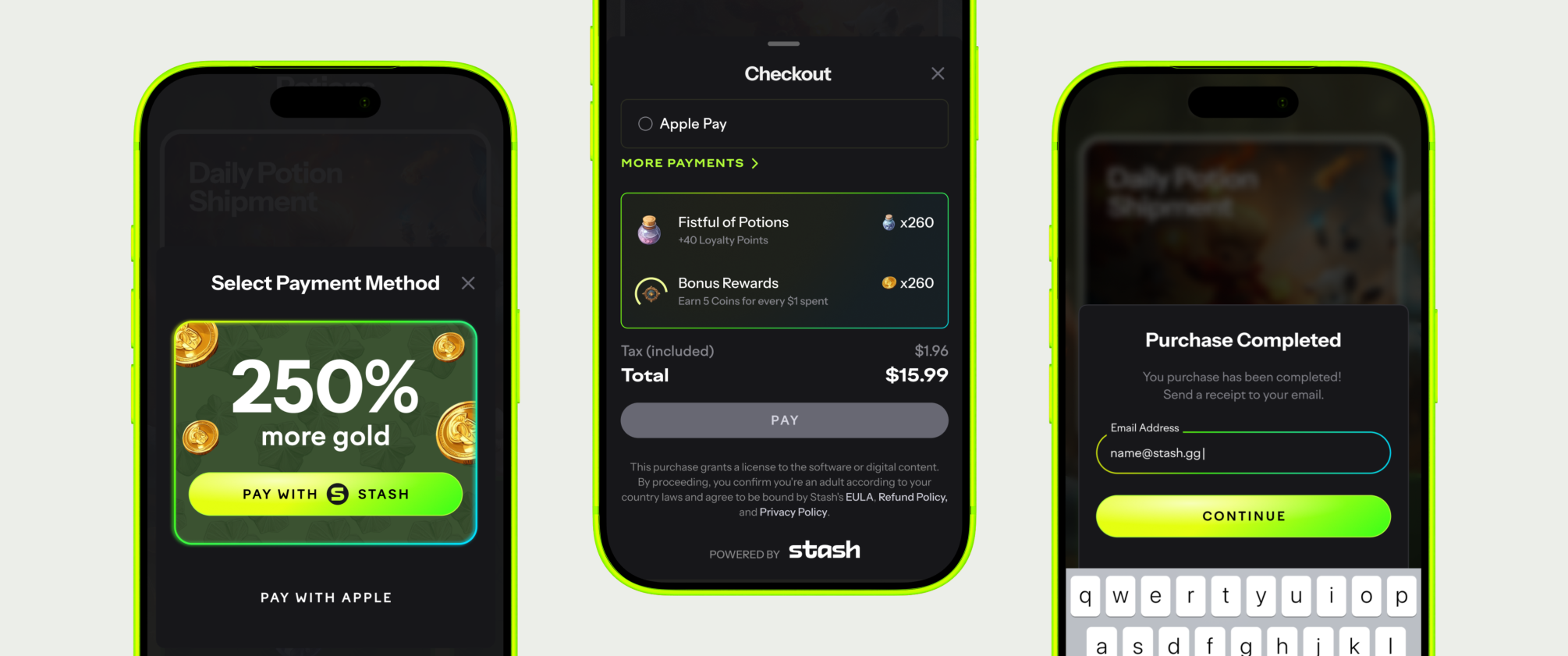
In-Game Checkout: Frictionless and High Adoption
Solutions like Stash Pay enable purchases directly within the game’s flow while remaining fully compliant with iOS and Android policies. Players never have to leave the game session, which makes adoption faster and conversion higher—especially for small to mid-ticket transactions.
In-game checkout is ideal for:
- Casual and mid-core titles where speed and convenience matter most.
- Time-sensitive offers such as retries, extra rolls, or energy refills.
- Players who are still in early lifecycle cohorts and haven’t yet developed strong purchasing habits.
The tradeoff is that in-game checkout’s reach is currently limited to U.S. iOS and Google Play, but if your game has a strong U.S. audience and you’re looking for a fast, compliant way to unlock incremental margin, in-game checkout offers the highest near-term ROI.
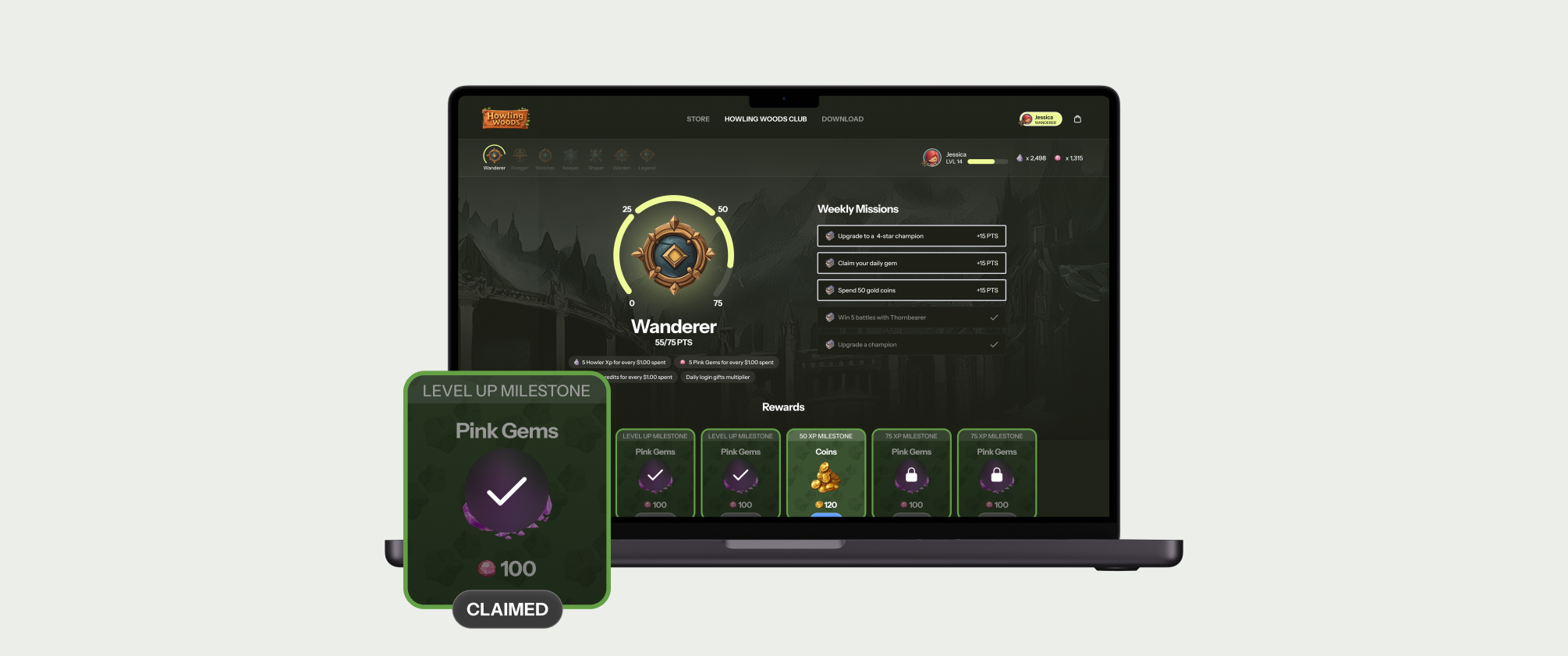
Web Shops: Flexible, Deep, and Loyalty-Driven
Web shops are best suited for mid-core and core titles that already have established economies and engaged spender bases. They open the door to larger transactions, high-value bundles, and long-tail re-engagement through offers that extend beyond the app.
The cost is slightly higher friction. Players need to link accounts or make their first purchase through a browser, but the payoff can be significant and studios often overestimate the impact of that friction. Players who make their first D2C purchase through a web shop often go on to spend more frequently and at higher average order values than their in-app counterparts.
When designed thoughtfully, with rewards, VIP tiers, and incentives like bonus currency, web shops can become a retention engine as much as a revenue channel.
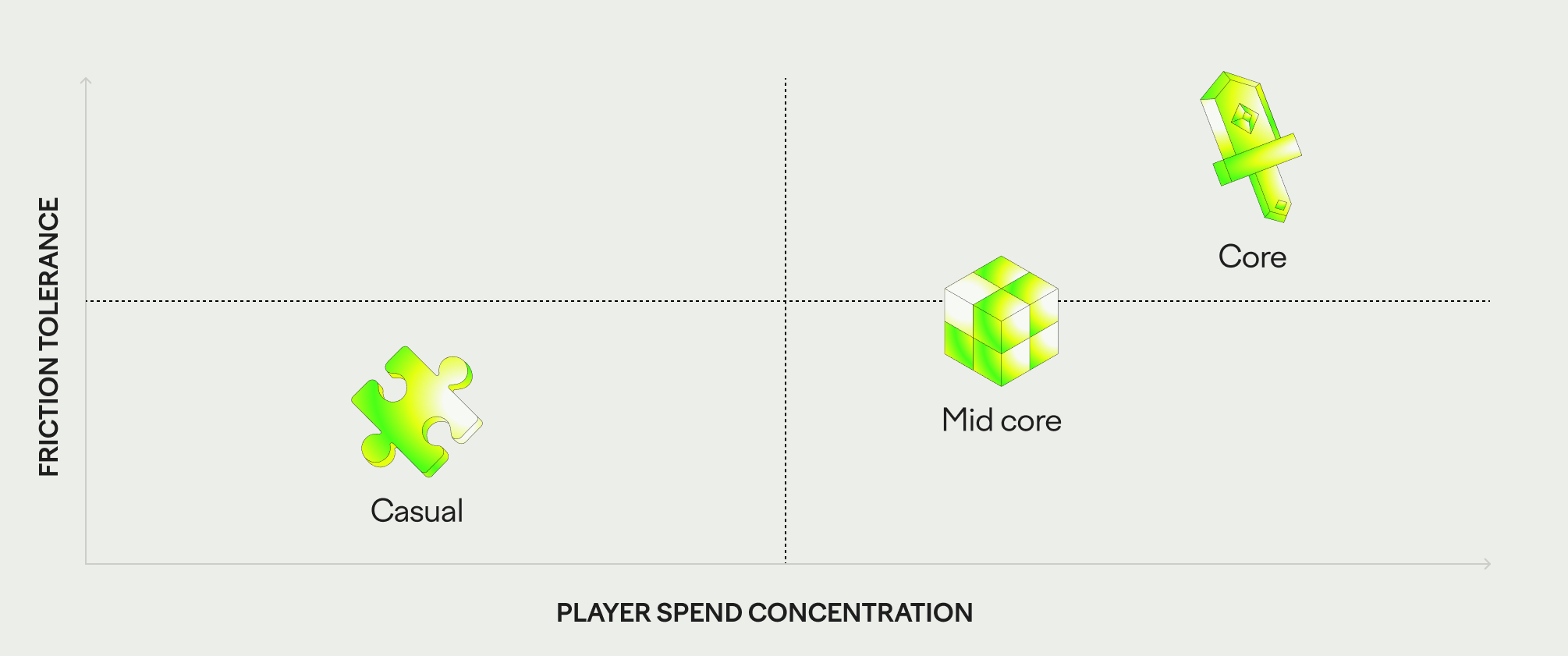
Genre Economics Determine Your Target Strategy
Once you’ve selected the right method, the next step is understanding how your game’s genre shapes the potential outcome. Player motivation, spend concentration, and tolerance for friction vary drastically between categories.
Casual Games: Win with Frictionless UX
Casual games thrive on accessibility. Their monetization depends on frequent, low-intent transactions. Think $0.99 lives, small boosts, or limited-time bundles. That means any friction in the payment flow can cause massive drop-off.
For casual titles, D2C potential lives and dies by how seamless the checkout experience feels. Even a single extra step, like redirecting to a browser, can tank adoption.
This is why in-game checkout solutions like Stash Pay are particularly powerful for casual studios. They remove the psychological barrier of leaving the game while still capturing the same revenue outside the store ecosystem.
In the near term, casual games may not drive the highest absolute D2C share of revenue, but they can achieve strong adoption rates and meaningful margin expansion across a broad base of players.
Mid-Core and Core Games: Win with Precision
Mid-core and core titles, on the other hand, have a completely different D2C profile. These games tend to have smaller but more deeply invested audiences. It’s not uncommon for the top 10% of players to drive 80–90% of revenue.
For this reason, a broad D2C rollout often dilutes focus. Instead, studios should start with their top decile of spenders (i.e., the players already making large or repeat purchases) and build D2C strategies specifically for them.
That might include:
- Exclusive web bundles or limited-edition content available only through your web shop.
- VIP programs or loyalty tiers that reward direct purchases with perks or recognition.
- Targeted messaging that nudges these players to migrate to D2C channels early in their lifecycle.
By focusing on the highest-value cohort first, studios can capture the majority of D2C’s financial benefit without adding complexity or risk to the broader player base.

Geography: The Hidden Multiplier
The third and often most overlooked factor in assessing D2C potential is geography.
Right now, the largest near-term opportunity for mobile D2C sits squarely in U.S. iOS and Google Play. These players have high purchasing power, familiarity with digital transactions, and strong trust in external payment flows.
For studios with a significant share of revenue in the U.S., D2C can quickly represent 15-25% of total spend within a year of launch, adding incremental revenue rather than cannibalizing App Store purchases.
Studios should also use in-game checkout as a gateway to their webshop. By introducing Stash Pay with an incentive such as a bonus currency or exclusive reward that can only be redeemed on the web, teams can guide players toward their web experience and encourage repeat engagement. This approach not only drives more traffic and conversions to the web shop but also helps establish the habit of purchasing directly, increasing the overall share of revenue flowing through D2C channels.
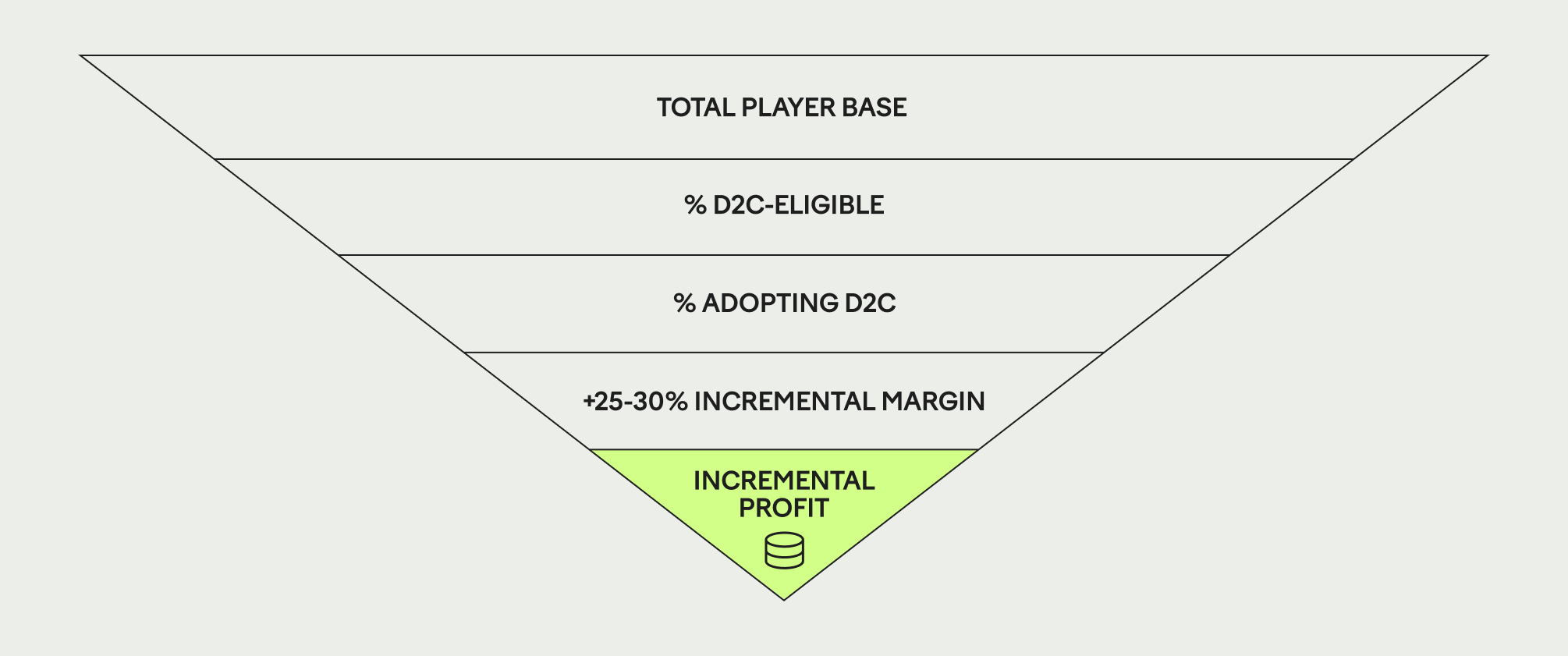
Calculating Your Upside
Once you understand the method, genre, and geography, you can model D2C potential with reasonable accuracy using three numbers:
- Addressable Audience: What percentage of your player base falls within D2C-eligible platforms or regions?
- Adoption Rate: How many of those players can you realistically convert? (Typical benchmarks: 2-10% for web shop, 10-30% for in-game checkout)
- Incremental Margin: How much additional profit per transaction does D2C yield compared to App Store purchases (often +25-30%)
Multiply those three together and you’ll have a directional sense of the revenue impact.
For example, a mid-core title with $50M in annual revenue, 40% of which comes from U.S. iOS players, might achieve:
- 20% D2C adoption among its top spenders
- 30% higher net margin per transaction
That combination alone would add roughly $1.2–1.5M in incremental profit annually before any retention or loyalty lift is factored in.
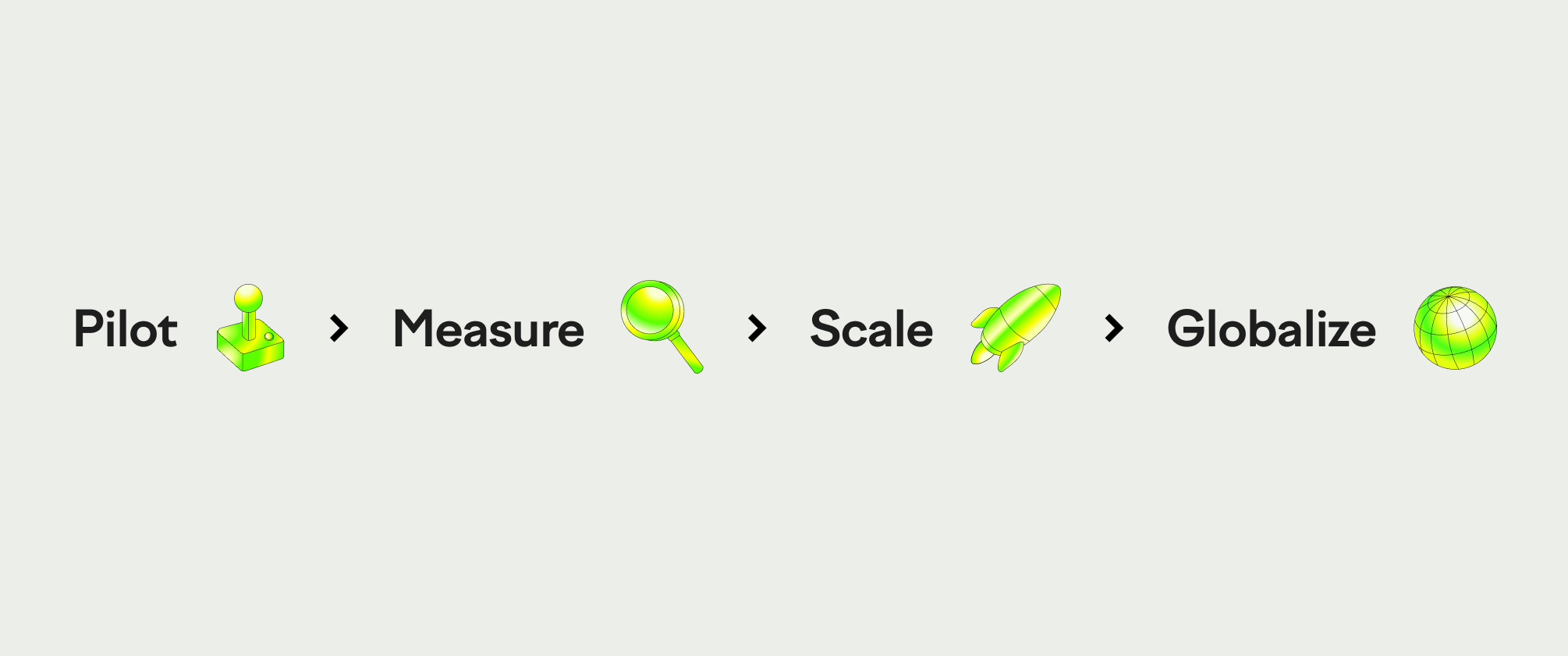
Start Targeted, Then Scale
D2C doesn’t need to start as a massive, all-player initiative. The most successful studios treat it as a measured rollout, focused on validating upside with a single segment before expanding.
Begin with a focused subset: your U.S. mid-core spenders, a single title, or one key platform. Measure adoption, net revenue impact, and repeat purchase rates. Once you’ve proven the model, scale the infrastructure globally.
This phased approach reduces risk, ensures you’re investing resources in high-return areas, and creates internal momentum around measurable success.
Final Thought
The most valuable insight about D2C potential is this: it’s not universal, it’s strategic.
The studios that succeed with D2C don’t treat it as a feature; they treat it as an evolving system. They understand which players, geos, and methods will deliver the greatest leverage first and they focus relentlessly on those.
Because when you convert the right players through the right channels at the right time, D2C stops being an experiment. It becomes a compounding advantage.
Ready to model your own D2C upside? Our team has helped top studios forecast launch, and scale high-margin D2C channels that drive measurable lift. Schedule a consultation with our team to discuss a plan that fits your game.


